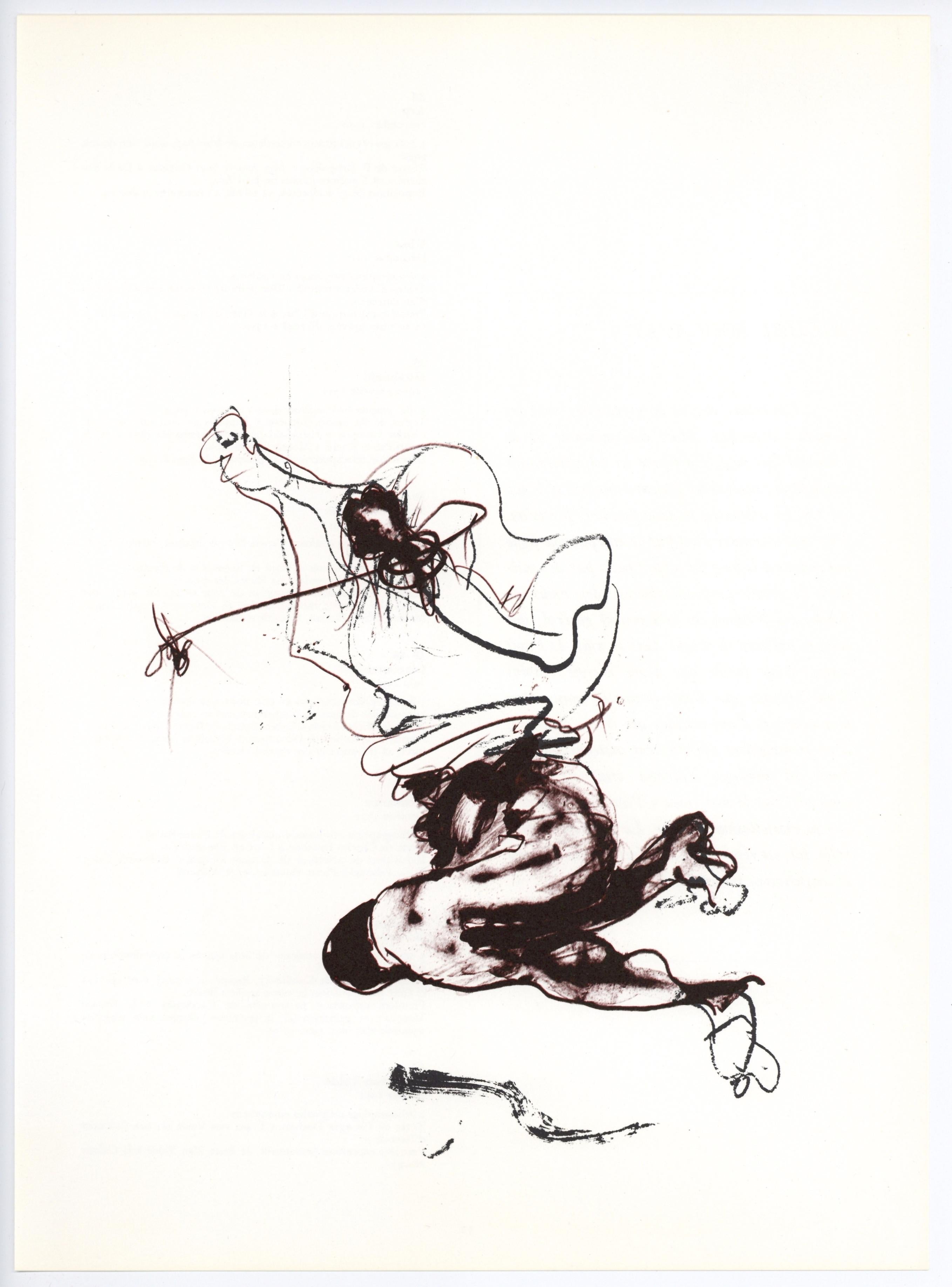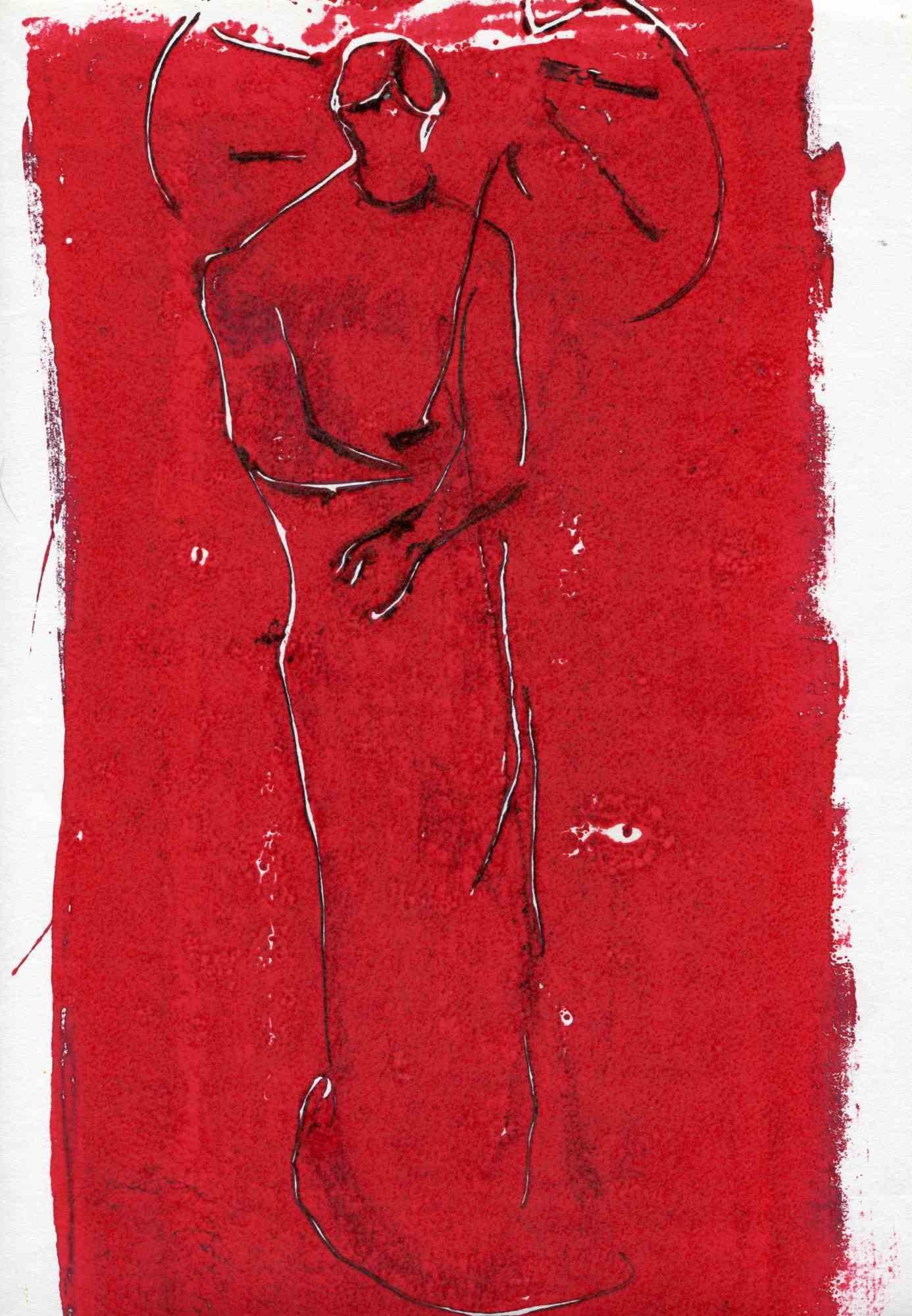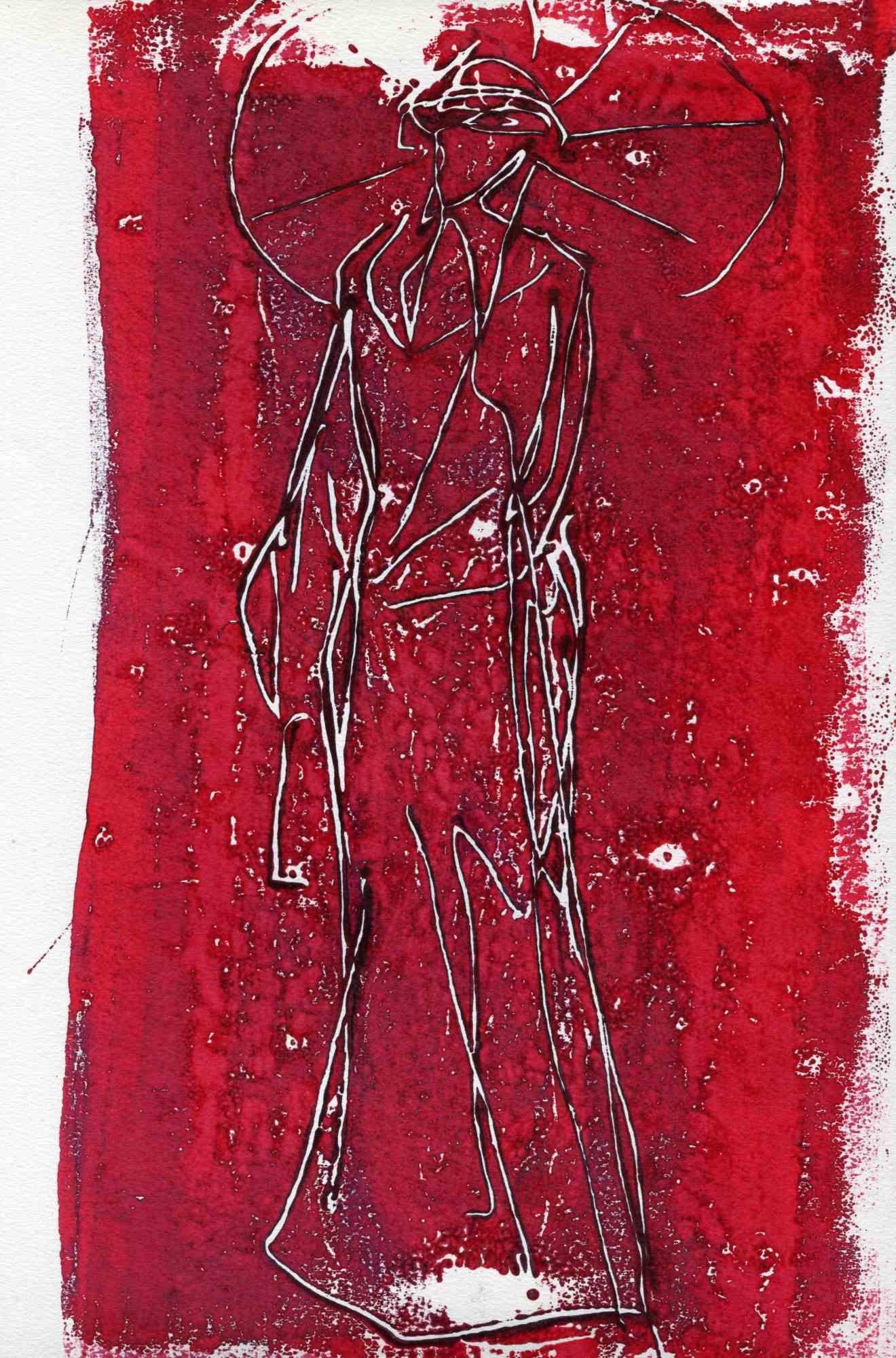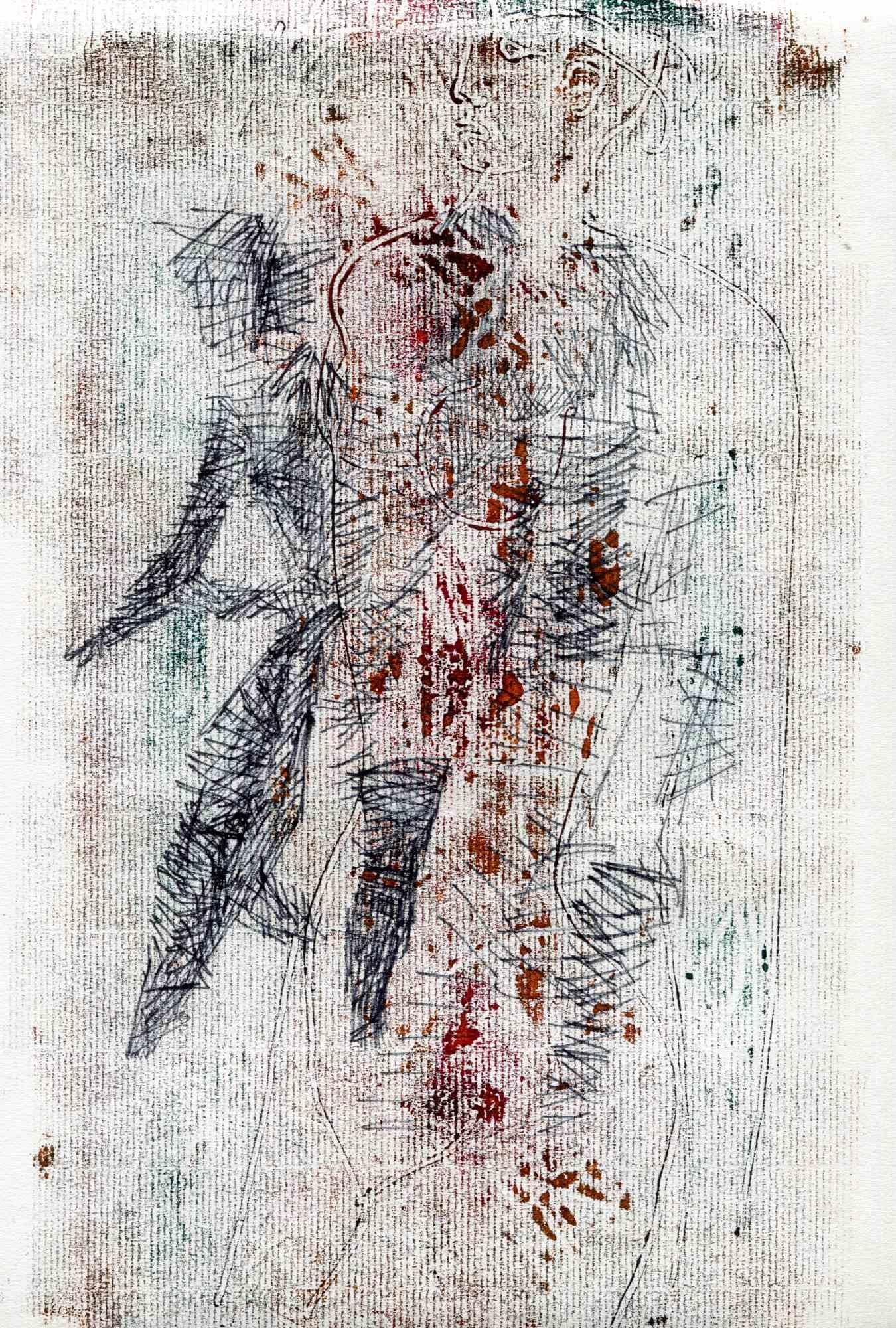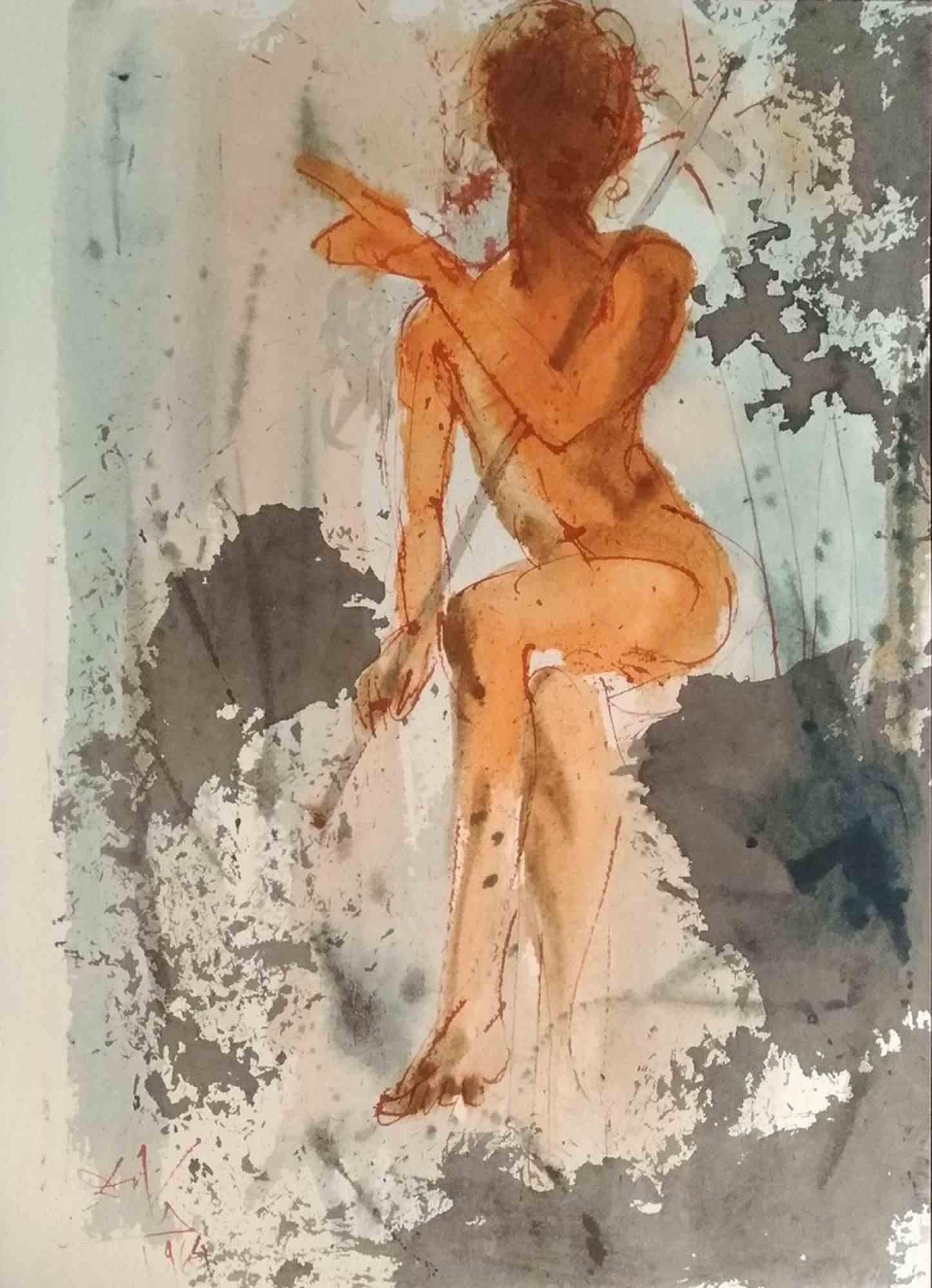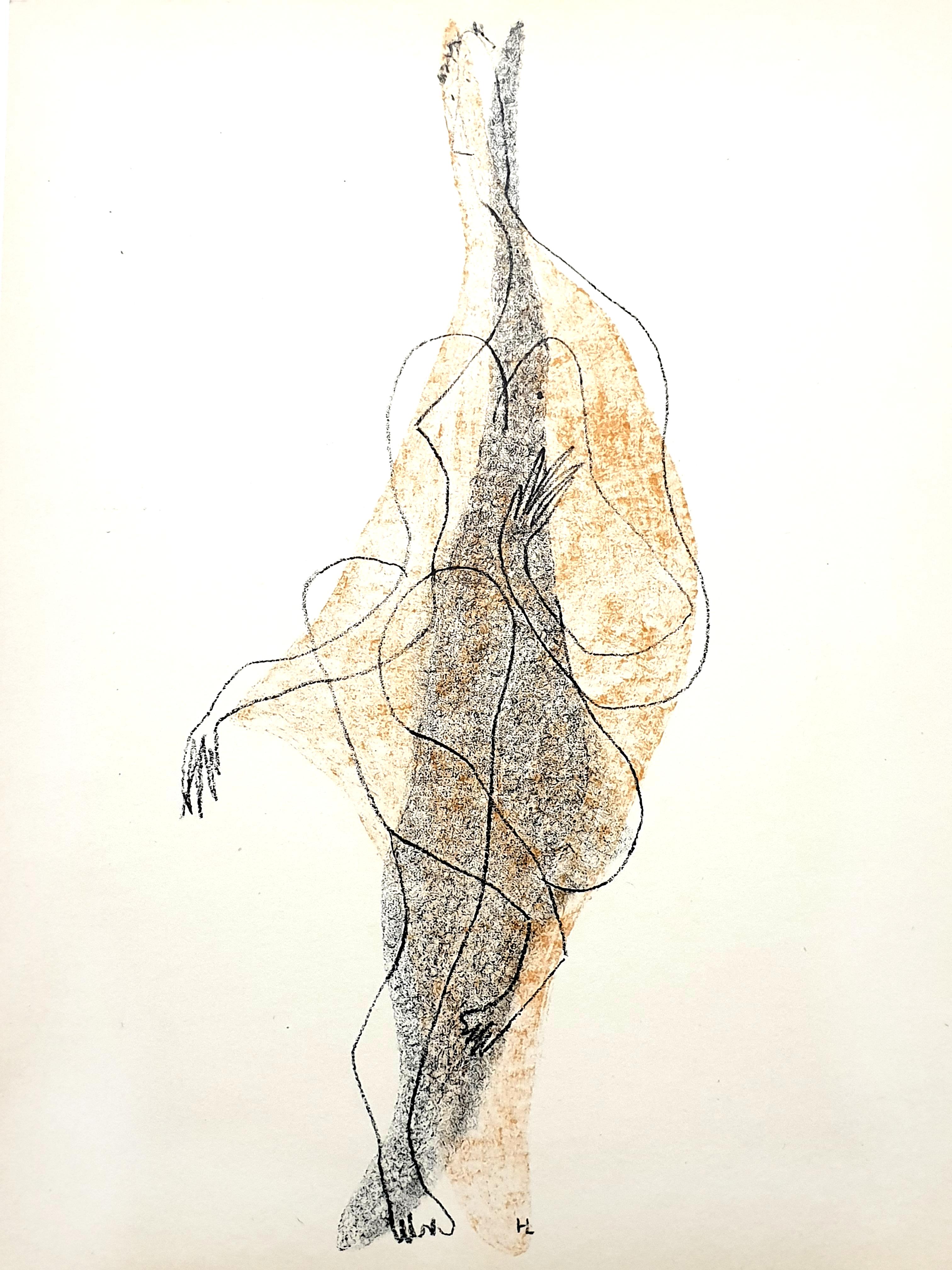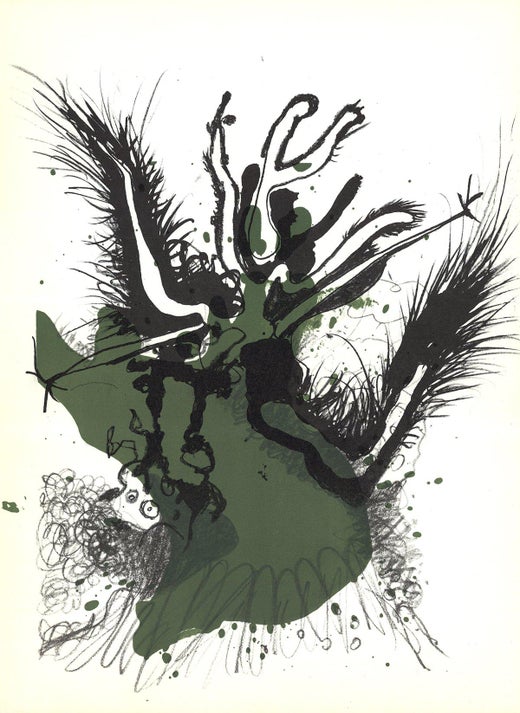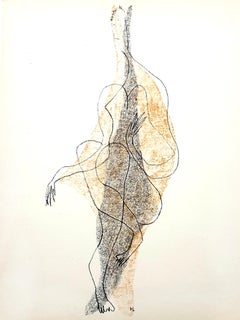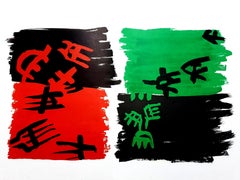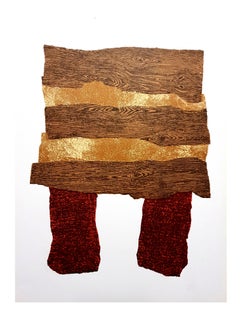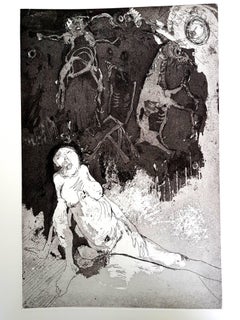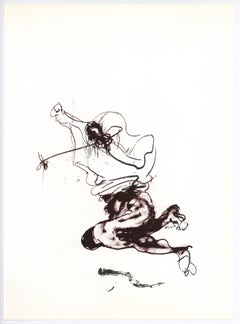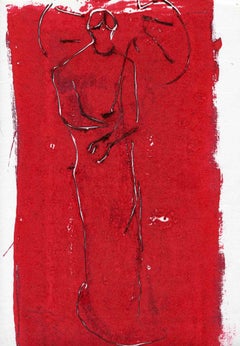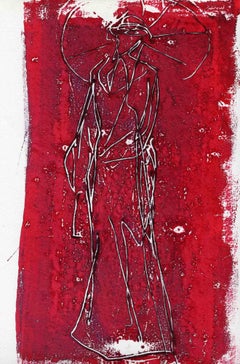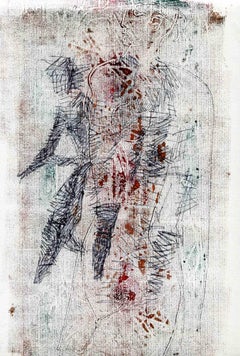Items Similar to Paul Rebeyrolle - Original Lithograph
Want more images or videos?
Request additional images or videos from the seller
1 of 9
Paul RebeyrollePaul Rebeyrolle - Original Lithograph1976
1976
$1,063.44
£809.30
€900
CA$1,488.65
A$1,640.37
CHF 850.83
MX$19,510.03
NOK 10,762.81
SEK 10,082.47
DKK 6,856.08
About the Item
Pablo Palazuelo - Original Lithograph
1976
Dimensions: 32 x 25 cm
Revue XXe Siècle
Edition: Cahiers d'art published under the direction of G. di San Lazzaro.
Paul Rebeyrolle (1926-2005) was born in Eymoutiers. He became one of the established major painters in the landscape of the 20th century French Art. His powerful and generous work is a call to freedom, a seditious act against the many faces of injustice, oppression, estrangement of man and his knack for self-blinding. it’s a hymn to the violent beauty of an indomitable nature, too. A truly timeless testimony.
As a child he had tuberculosis of the bone, which caused for long periods of immobility. Later he studied in Limoges and joined the French Communist Party. He ultimately broke with the party because of events related to the Hungarian Revolution of 1956. His art is often concerned with landscapes, but is marked by violence and rage. He received praise from François Pinault, Jean-Paul Sartre, and others.
Paul Rebeyrolle endlessly asked questions of the place of man in society and also of the place of man in nature. For Paul Rebeyrolle was a lover of the earth from which he was moulded, of the nature with which he maintained a privileged, physical, sensual and nourishing relationship, which he learned to observe as he observed humanity. All through his life, between two series, he felt the need, as if to take a breath between two combats, to calm down for a moment, to paint rivers, trees, fish, wild boars, dogs, cows, lizards. He preferred the solitude of the forest to the deafening noise of the town, the silence of his workshop to the noise of words.
Unflagging worker, he experimented unceasingly, drawing from his materials, in a unique and often surprising manner, the weapons with which to reply to the violence of the subject. Inert, they take life, a life that explodes, well beyond the frame: wood, earth, stone, scrap iron, electric wire, iron wire, hessian, hair, horse hair, feathers, birds took part in this birth. Mixed together by the paint, they became paint. His mastery of the technique and of composition drove him to be ever-more demanding, the desire to be as accurate as possible, to represent without distortion.
The works of Paul Rebeyrolle constitute a manifesto that once again uses a path that has been little used in the history of painting, that of Goya, Géricault, Courbet, who he admired. A steep and rough path, the one of combat against the blindness of men. The path of a committed painter, witness and critic of his time.
- Creator:Paul Rebeyrolle (1926-2005, French)
- Creation Year:1976
- Dimensions:Height: 12.6 in (32 cm)Width: 9.85 in (25 cm)Depth: 0.04 in (1 mm)
- Medium:
- Movement & Style:
- Period:
- Condition:
- Gallery Location:Collonge Bellerive, Geneve, CH
- Reference Number:1stDibs: LU16123559071
Paul Rebeyrolle
Paul Rebeyrolle (1926 - 2005) was a French painter born in Eymoutiers, France. As a child he had tuberculosis of the bone, which caused for long periods of immobility. Later he studied in Limoges and joined the French Communist Party. He ultimately broke with the party because of events related to the Hungarian Revolution of 1956. His art is often concerned with landscapes, but is marked by violence and rage. His work is sometimes abstract, or near abstract, portraying imagined animals, body parts or partial human figures, and seems to be a combination of invention and observation, where emotion plays a front role. He received praise from Francois Pinault, Jean-Paul Sartre, Michel Foucault and others.
About the Seller
4.9
Gold Seller
Premium sellers maintaining a 4.3+ rating and 24-hour response times
Established in 2015
1stDibs seller since 2015
967 sales on 1stDibs
Typical response time: 1 hour
- ShippingRetrieving quote...Shipping from: Collonge Bellerive, Geneve, Switzerland
- Return Policy
More From This Seller
View AllHenri Laurens - Character - Original Lithograph
By Henri Laurens
Located in Collonge Bellerive, Geneve, CH
Marino Marini - Character - Original Lithograph
1951
Dimensions: 32 x 24 cm
From XXe siècle
Unsigned and unumbered as issued
Category
1950s Surrealist Abstract Prints
Materials
Lithograph
Giuseppe Capogrossi - Original Lithograph
By Guiseppe Capogrossi
Located in Collonge Bellerive, Geneve, CH
Giuseppe Capogrossi - Original Lithograph
Colorful Abstraction
1969
From the art revue XXe Siecle
Dimensions: 19 x 12.25 inches
Edition: G. di San ...
Category
1960s Modern Figurative Prints
Materials
Lithograph
Enrico Baj - Lithograph
By Enrico Baj
Located in Collonge Bellerive, Geneve, CH
Enrico Baj - Original Lithograph
Colorful Abstraction
1962
From the art revue XXe Siecle
Dimensions: 32 x 24
Edition: G. di San Lazzaro.
Unsigned and unumbered as issued
Category
1960s Modern Figurative Prints
Materials
Lithograph
Jean Jansem - Original Etching
By Jean Jansem
Located in Collonge Bellerive, Geneve, CH
Jean Jansem - Original Etching
Title: Loneliness
Dimensions: 40 x 30 cm
Edition of 175
Paper: vélin de Rives
1974
Unsigned and unumbered as issued
Category
1970s Modern Figurative Prints
Materials
Etching
Jean Bazaine - Original Lithograph
By Jean Bazaine
Located in Collonge Bellerive, Geneve, CH
Jean Bazaine - Original Lithograph
1976
Dimensions: 32 x 25 cm
Revue XXe Siècle
Edition: Cahiers d'art published under the direction of G. di San Lazzaro.
ean Bazaine is born in P...
Category
1970s Abstract Geometric Figurative Prints
Materials
Lithograph
Jean Bazaine (after) - Lithograph
By Jean Bazaine
Located in Collonge Bellerive, Geneve, CH
Jean Bazaine (after) - Lithograph
1958
Dimensions: 32 x 24 cm
Signed in the plate
From the art revue XXe siecle
Unumbered as issued
Category
1970s Abstract Geometric Figurative Prints
Materials
Lithograph
You May Also Like
original lithograph
By Paul Rebeyrolle
Located in Henderson, NV
Medium: original lithograph. Printed in 1982 for Derriere le Miroir (issue No. 250), and published in Paris by the Maeght atelier. Size: 15 x 11 inches (380 x 277 mm). There is text ...
Category
1980s Prints and Multiples
Materials
Lithograph
Figure - Original Lithograph - Mid-20th Century
Located in Roma, IT
Figure is an original lithograph on paper realized by an anonymous artist of the mid-20th Century.
In very good conditions.
The artwork created through confident strokes, short and...
Category
Mid-20th Century Modern Figurative Prints
Materials
Lithograph
$190 Sale Price
30% Off
Figure - Original Lithograph - Mid-20th Century
Located in Roma, IT
Figure is an original lithograph on paper realized by an anonymous artist of the mid-20th Century.
In very good conditions.
The artwork created through confident strokes, short and...
Category
Mid-20th Century Modern Figurative Prints
Materials
Lithograph
Figure - Original Lithograph - Mid-20th Century
Located in Roma, IT
Figure is an original lithograph on paper realized by an anonymous artist of the mid-20th Century.
In very good conditions.
The artwork created through confident strokes, short and...
Category
Mid-20th Century Modern Figurative Prints
Materials
Lithograph
Ipse Erat Elias - Lithograph - 1964
By Salvador Dalí
Located in Roma, IT
Ipse erat Elias is an artwork realized in 1964.
It is part of Biblia Sacra vulgatæ editionis published by Rizzoli-Mediolani between 1967 and 1969.Color lithograph on heavy rag paper...
Category
1960s Contemporary Figurative Prints
Materials
Lithograph
$368 Sale Price
35% Off
Figure - Original Lithograph - Mid-20th Century
Located in Roma, IT
Figure is an original print in lithograph on paper realized by an anonymous artist of the mid-20th Century.
In very good conditions.
The artwork created through confident strokes, ...
Category
Mid-20th Century Modern Figurative Prints
Materials
Lithograph
